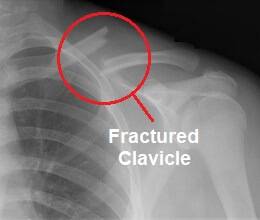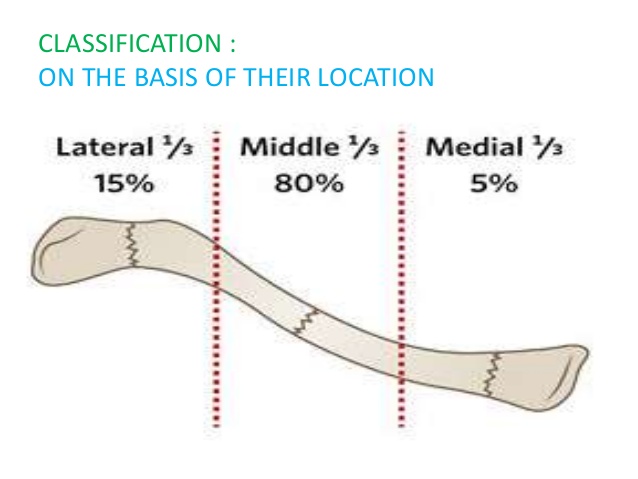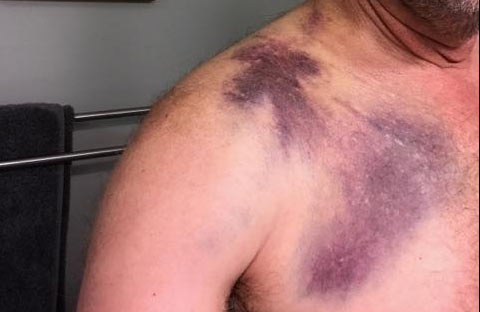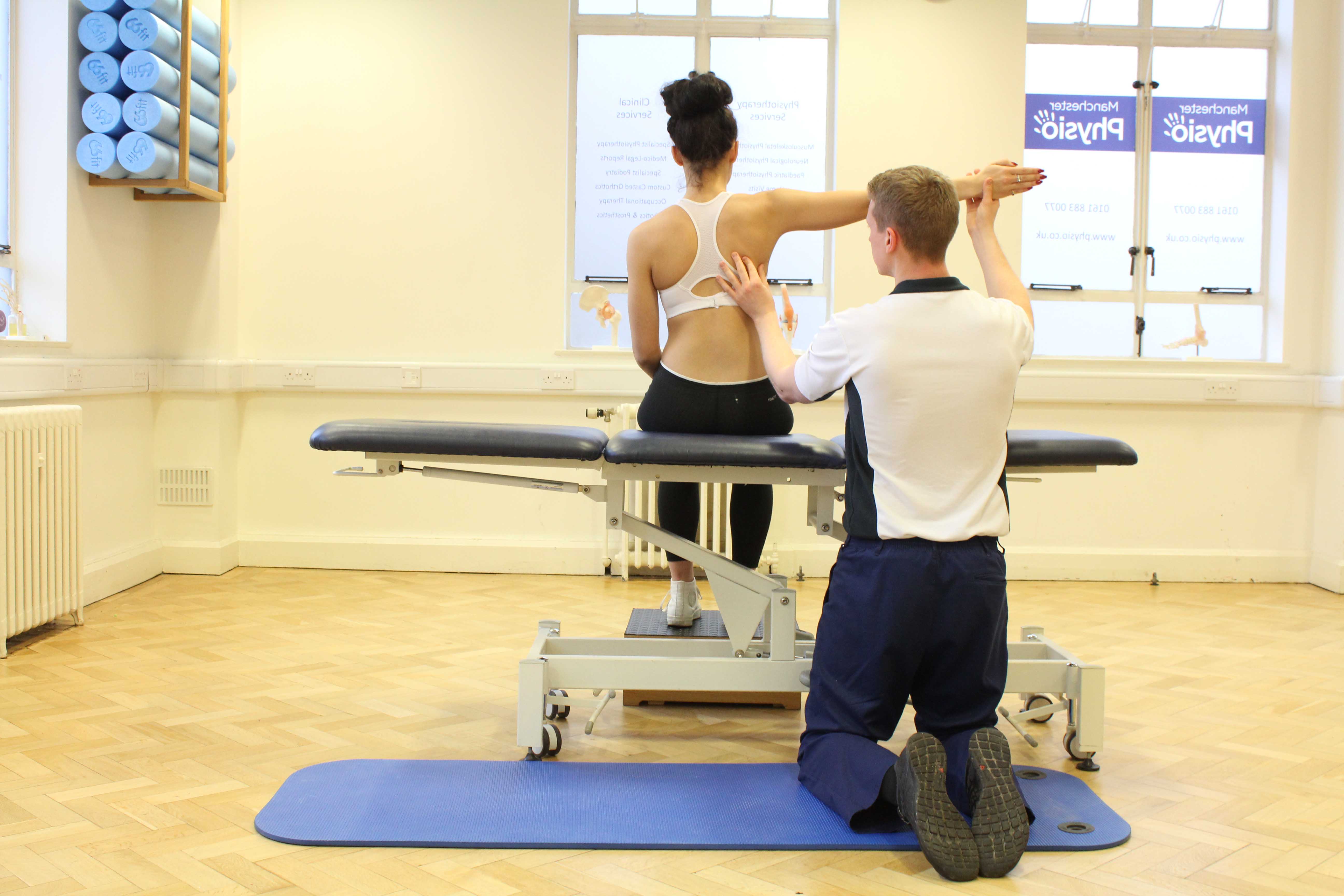|
BOOK NOW |
ASK ABOUT YOUR PAIN |
Home > Blog > Physiotherapy > Clavicle Fracture Physiotherapy
Clavicle Fracture Physiotherapy

Our clavicle, or also known as our collarbone, connects the arm to the body, helping to stabilize the shoulder and arm as they move. Unfortunately, clavicle fractures are a common shoulder injury, making up 4% of all fracture types and 35% of all shoulder injuries.
This particular injury is most often caused by trauma, such as a direct blow to the shoulder in sports (most common) or accidents; or a fall, and is most often diagnosed in people under the age of 20. As people age, it is more likely to occur with a fall. It also becomes more common for women to fracture their collarbones with age, and less likely for men.
Most clavicle fractures are treated without the need for surgery, but more complex fractures may require surgery. In either case, what our senior physiotherapist can do to help promote healing and a safe return to normal activity by providing
- pain management
- clavicule fracture physiotherapy exercises
- functional training
What is Clavical Fracture?
The clavicle (collarbone) is a bone that is found on the front of the shoulder and connects the arm to the body by a joint at the sternum, or breast bone (the sterno-clavicular joint), and by a joint at the scapula, or shoulder blade (the acromio-clavicular joint).
Our clavicle functions to
- help stabilize the shoulder during movement
- help to protect nerves and blood vessels underneath the shoulder
Clavicle fractures are classified according to the place where the bone is broken. The 3 classifications are:

Midshaft (middle of the bone)
- 75% to 80% of all clavicle fractures
- Usually occurs in younger persons
Lateral-end (near the acromio-clavicular joint)
- 15% to 25% of all clavicle fractures
Medial-end (near the sterno-clavicular joint)
- Rare; 5% of all clavicle fractures
Fractures are classified as:
- Nondisplaced. The pieces of the fractured bone remain aligned in normal location.
- Displaced. The 2 parts of the fractured bone are not aligned together.
- Comminuted. Splinters or multiple small pieces of bone are found at the fracture site. Sometimes the fracture fragments can pierce the skin, causing a compound fracture.
How Does a clavicle fracture Feel like?

If you break your clavicle (collarbone), you will immediately experience pain in the area of the bone fracture.
You may see purple bruising in the area that may spread to the shoulder and arm. Swelling will occur at the injury site, and in the arm. You may see a bump in the area of the break from the bone lifting the skin, like a tent. It may be unnerving but unfortunately it is common to feel movement of the bone as it shifts.
Your clavicle and collarbone area will feel tender to touch, and most people with this injury will not be able to lift their arm. Most patients will hold their arm close in to the body, and support the arm with the other hand.
clavicular fracture Signs and Symptoms
- Pain is usually felt in the area of the clavicle. Arm pain or changes in sensation may occur in more severe cases.
- Bruising.
- Swelling.
- Inability to lift the arm.
- Grinding sensation with movement.
- A bump at the injured area.
How Can our senior PhysioTherapist Help?

Fortunately, most clavicle fractures are treated conservatively (no need/without surgery).
The involved arm will be placed in a sling or a figure-8 brace to secure it and support its weight for comfort. Our senior physiotherapy will start physiotherapy as early as possible to
- reduce pain
- reduce swelling
When you can tolerate movement of the arm, our senior physiotherapist will prescribe gentle exercises of the involved shoulder and elbow to prevent joint stiffness, and to help you begin to recover full movement.
As your clavicle continues and healing progresses, your pain and swelling will also progressively improve and resolve. When your orthopedic surgeon sees adequate healing they will ask our physicotherapists to help guide you towards reducing the use of your brace. Also under the guidance of our senior physiotherapist, your exercises will be gradually progressed to a more active level to prevent weakness and stiffness, and regain full movement.
After 6 to 8 weeks, or when the bone shows adequate healing, we will start with more strenuous strengthening exercises will begin. We will design a return-to-activity training program for you, specific to your activities of daily living, work, and sport.
Healing times vary among individuals due to differences in age, health, and the complexity of the injury. Most patients return to nonstrenuous daily activity after about 6 weeks, and strenuous job duties after 9 to 12 weeks.
Following Surgery
Physicotherapy rehabilitation after surgery is similar to that provided for nonsurgical cases, but progression of the program will follow a strict schedule set by the surgeon. Post clavicle ORIF surgery, physiotherapy typically begins immediately following the operation, and continues for 8 to 12 weeks (up to 16 weeks).
The first week after surgery, we will help you control pain and swelling, and may begin some gentle motion exercises. You will be wearing a sling or brace for support and comfort. Over the next few weeks, we will help you gradually increase your exercise program.
After 4 weeks, if x-rays show good position and stability, we will guide you to achieve a full range of motion of your shoulder. At 6 to 8 weeks, if x-rays show adequate healing, treatment will progress to include strengthening and resistance exercises.
These time frames will vary among individuals based on differences in age, health, the complexity of the injury, and the surgical procedure.